Features of the propagation of geraniums by cuttings at home
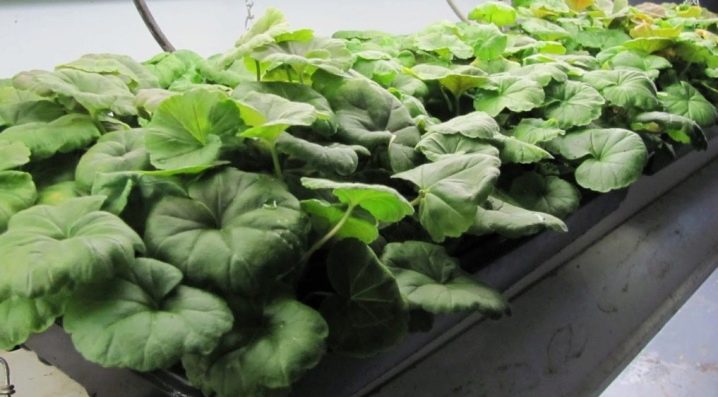
Before considering and talking about the methods of breeding geraniums at home, you need to give a description of this flower. Geranium belongs to the genus of semi-shrub herbaceous plants. And also in nature there is a plant similar to geranium - pelargonium.
Geranium has regular flowers with five petals and fruits with long tails. Pelargonium, unlike geranium, has irregularly shaped flowers with a spur. The leaves of the plants are simple, oval, with small denticles along the edges. Geranium can also be found in the wild, while pelargonium is a thermophilic houseplant, and is often simply called room geranium and is grown mainly at home. In what follows, for the sake of simplicity, we will also refer to it as geranium.
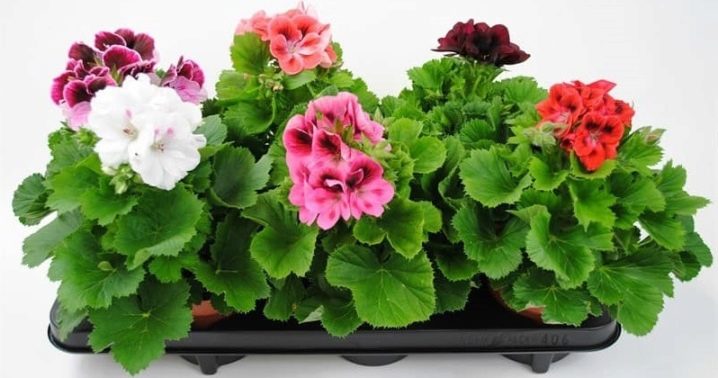
The right time
Reproduction of pelargonium (hereinafter geranium) at home is not difficult, and any novice flower lover can handle it. This flower has a wide variety of varieties, however, it can only be propagated and bred in two ways: cuttings and seeds.
Seedlings do not appear immediately from the seeds; after six months from the moment of emergence, the plant will begin to bloom. It is best to breed a plant vegetatively, that is, cuttings, then you can save all the characteristics of a certain grade.
This is not only the most effective, but also the most reliable way, it also gives rejuvenation to the original mother flower.
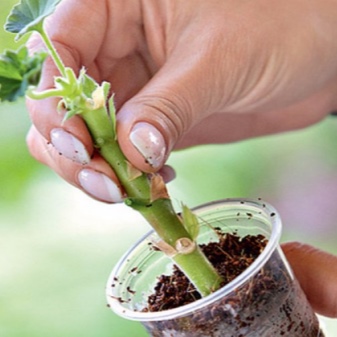

In order for geranium to bloom for a long time and delight with its beauty, it is necessary to cut geraniums at a certain period. The most suitable time for propagation by cuttings is either in winter or early spring, or in autumn.
The later the dates, the more likely it is that indoor geranium will bloom only the next year after January. Two periods of the year are considered optimal. Late February to early April, when the plant is actively producing vegetable juices. During the reproduction of plants in this period, flowers will appear by the end of summer.
But also a suitable period for plant reproduction is the end of summer, the beginning of autumn, when the plant has not yet gone into the resting phase, in this case the plant will bloom next year.
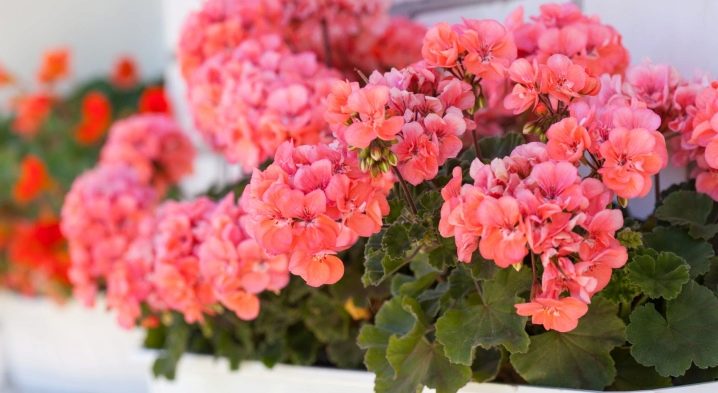
How to get cuttings from a mother plant?
In order to get a healthy flower with a powerful root system, a large number of flowers, geranium must be propagated correctly and only from a healthy mother flower. To properly cut plants, you need to adhere to some rules.
- You need a sharp knife, which is pre-treated with alcohol. Otherwise, you risk damaging the cutting, and, as a consequence, its root system will develop slowly.

- Cuttings should be cut at a 90 degree angle (right angle) to the main stem. At the time of cutting, there should be at least three leaves on the handle. If the variety is tall, then the length of the cutting should be from 5 to 7 centimeters. For low varieties of sufficient length, there will be a cutting of up to 4 centimeters. It is desirable that the cuttings taken do not have inflorescences or buds. Otherwise, the root system on the cuttings will develop slowly and take root in the ground for a long time.

And one more recommendation: when grafting from an adult plant, it is the upper shoots that are cut off. Then the shoot is placed in water, preferably in an opaque container, since the roots of the plant love darkness.When the sprout has a fairly strong root system, it can be transplanted into the ground.
In order for the plant not to die and bloom for a long time, it is necessary to make optimal conditions and proper care for it. The container with the handle must be put in a sunny place, the water must be changed once every 2 days.

Rooting
After the cuttings have been successfully cut, and in order to further propagate them, you need to pluck all the arrows with flowers and buds. And also remove the leaves from the cutting, except for two - one on top and the second on the side. This must be done so that the root system forms and develops in the cuttings, and the forces of the sprout are not wasted on flowering.

When the sprouts give their roots, they must be transplanted into a pre-prepared permanent container. Like any other plant, geranium has its own varieties. The sprout of each variety needs its own time for rooting. There are 4 main types of geraniums:
- fragrant pelargonium - rooting period up to 6 weeks;
- royal geranium - up to 4 weeks;
- ivy geranium - 2 weeks;
- zonal pelargonium - the rooting period is also 2 weeks.
There are 2 main types of how you can plant sprouts - these are in the ground and in the water. Let us describe these methods in more detail.
How to root in water?
The easiest way is to reproduce in water. But despite the simplicity of this method, it is not suitable for all varieties of flowers. You need to be careful about the processes so that they do not start to rot without taking root.
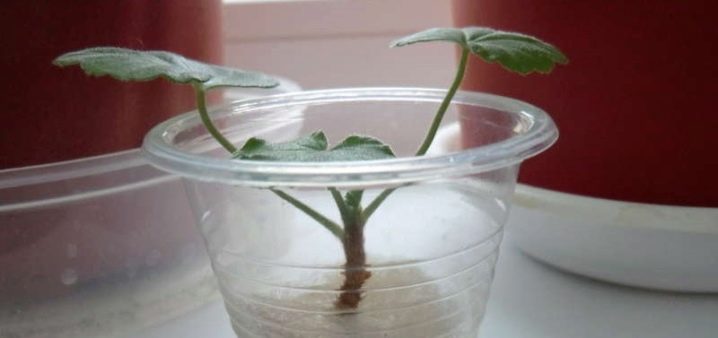
To quickly and easily dilute the processes, it is necessary to grind a tablet of activated carbon and pour it on the bottom of the container. The container should be dark or opaque, a disposable plastic cup will work well. Then pre-settled water is poured into a glass, which must be at room temperature, otherwise the shoot will not take root and die.
The sprout only needs to be placed halfway in a glass, the water in the glass must be changed at intervals of 2 days. This will avoid evaporation of the liquid or, conversely, root rot. When the roots of the sprout have grown by 3 centimeters, it can be transplanted into the ground.

Landing in the ground
Before transplanting the cuttings into the ground, the sprouts must be treated with a rooting agent. For such cases it is good the drug "Kornevin" is suitable, but other analogs can be used. Slices on the shoots must be sprinkled or soaked in a solution of this or another fertilizer of your choice. Then let them dry, and even then you can plant the seedlings in a pot.
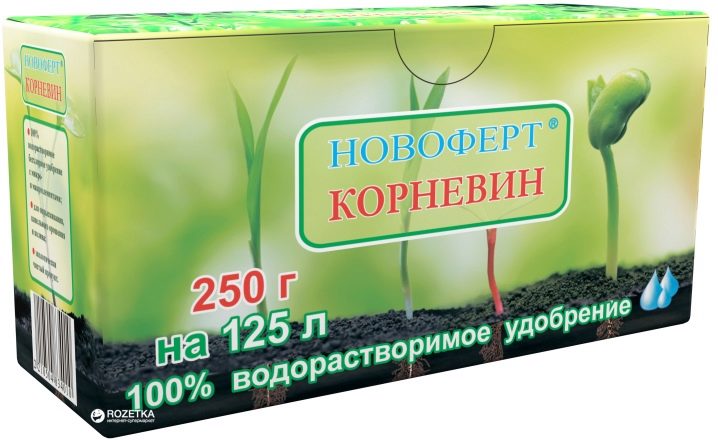
Before planting a ready-made stalk in a permanent pot, several rules must be followed.
- The pot or any other vessel should be small, the optimal container volume is 200 milliliters. There should be drainage holes at the bottom so that excess moisture does not remain in the ground. If you plant several shoots in one large container, then there is a possibility that the roots will get tangled and in the future it will be difficult for you to plant them. To avoid this, when planting several shoots, it is necessary to maintain a distance of at least 15 centimeters between them.
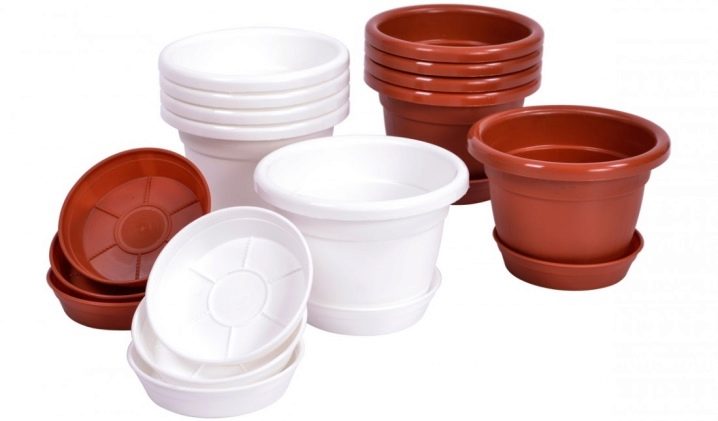
- Then place drainage on the bottom of the pot. And also instead of drainage, styrofoam, pebbles, peat or crumbled bricks are well suited. After leveling the drainage layer, cover it with pre-prepared loose soil. You can prepare it yourself by mixing humus, garden soil, sand (preferably river) and turf. The soil should only cover half of the container so that more can be added after the sprouts are fixed.

- After that, the soil should be well watered with hot boiled water, you can also use a weak solution of potassium permanganate, which should also be hot. After that, let the ground cool completely. Cuttings should be planted to a depth of 2 to 4 centimeters, no less. Tamp the earth around the cutting and, continuing to fill the pot with earth, constantly tamp it.
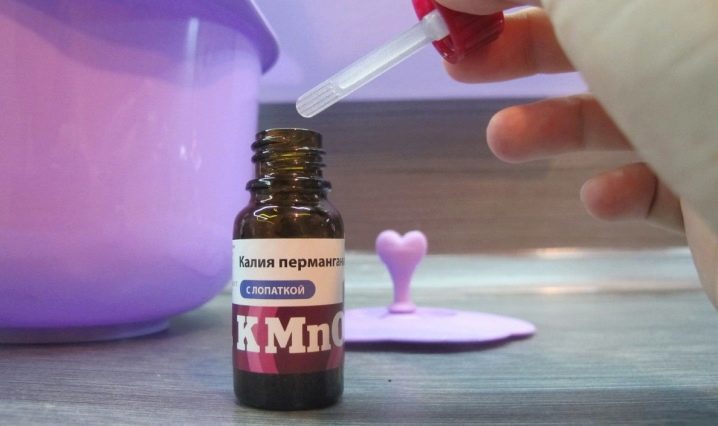
- Geraniums love warmth and light, so put the pot in a well-lit, warm place. But before that, it is desirable that the pot with the sprout stand for 2-3 days in a shaded place. The room temperature should be in the range of 15-25 degrees Celsius. You need to water the sprouts carefully so that the water does not get on the leaves, otherwise they may begin to rot. It is best to water through a drip tray to prevent water from spilling onto the leaves.
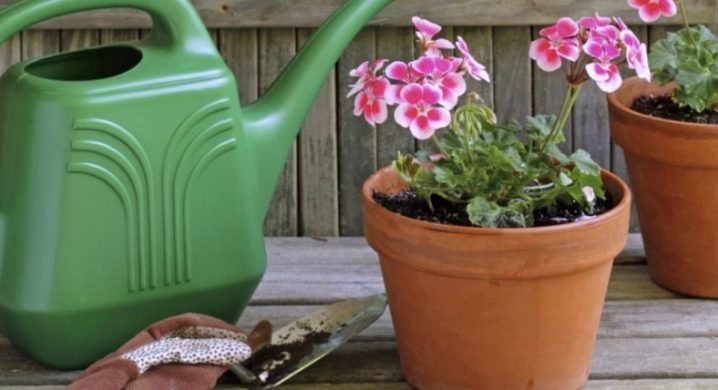
- If the stalk has weakened, or its leaves begin to turn yellow, then such a sprout needs to create greenhouse conditions... The pot with the sprout must be covered with either a jar or a transparent bag.
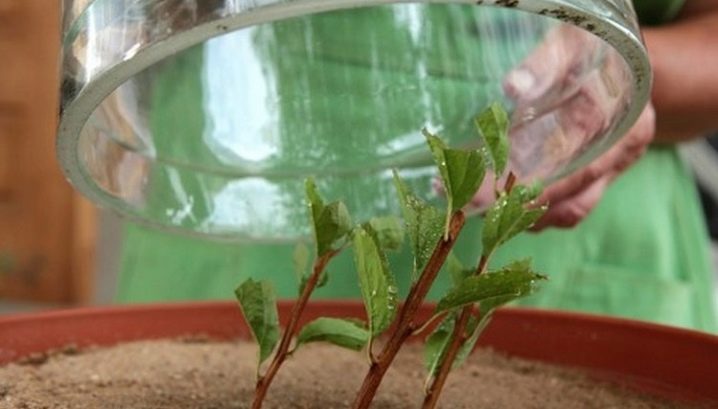
Rooting of a plant in the ground is much slower than in water. Therefore, after transplantation, the sprouts need to be monitored, and if any deviations appear, measures should be taken.
- If, after planting the cuttings, their leaves wilted, they need to be cut... If the leaves turn yellow and dry, then the sprout does not have enough moisture, and you need to increase the frequency of watering. In a situation where, on the contrary, rot began to appear on the leaves, and the leaves themselves became lethargic, it indicates that you have gone too far with water, and you need to reduce watering. Otherwise, it is better to transplant the cutting into another pot, otherwise it may die.
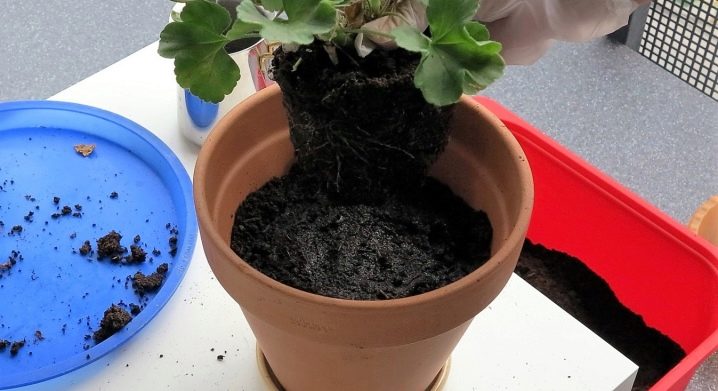
- If the cutting begins to rot on the stem near the ground, you need to cut it to a healthy part of the stem and root it in new soil, observing all the above recommendations.
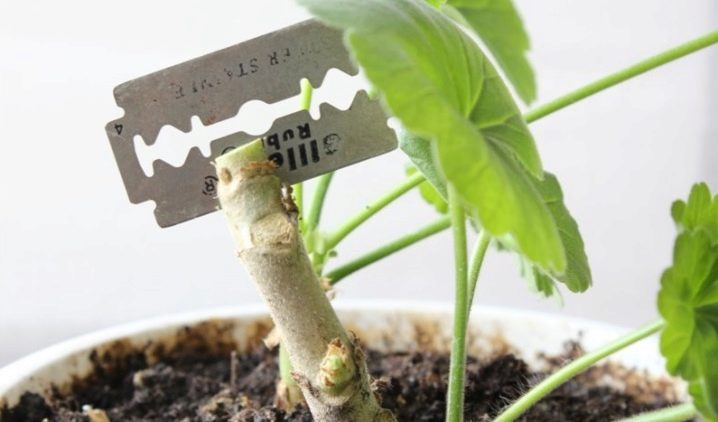
- If, after rooting, a lot of time has passed, and new leaves have appeared on your sprout, but the plant does not bloom, it means that you have picked up too large a pot for it, and all the vitality goes into the roots. In this case, it is better to transplant it into a smaller container, or cut off a new stalk from it.
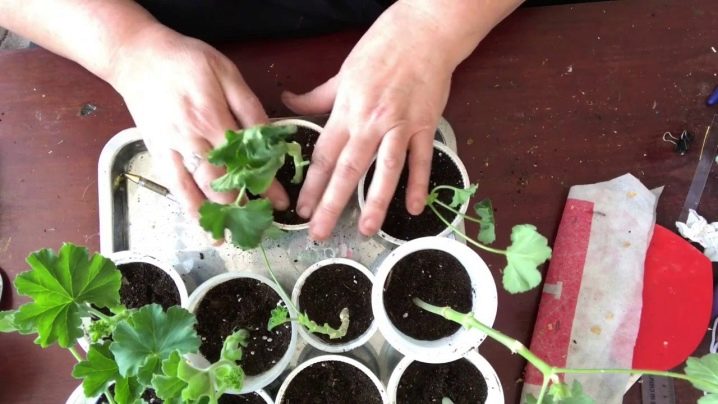
As soon as new leaves appear on the shoots, we can assume that the plant has taken root and has taken root in the pot.

Further care
Gradually, over time, the geranium at the bottom of the trunk sheds its leaves. A plant that was once fluffy and flowering can grow into a lone stick with rare flowers. To grow a plant with lush leaves and an abundance of flowers, it must be constantly and correctly cuttings.
And also when growing geraniums, you need to remember that the constant transplanting of a plant from one pot to another can reduce or completely stop flowering. Geranium belongs to plants that do not like frequent transplantation; it should be transplanted only in special cases. For example, when a plant has root pain, or when it has grown very much.
The place in which you will have a pot of geraniums must be chosen correctly. This should be a draft-free room. Water the plant sparingly as the soil dries out, preferably through the pan of the pot.
If you have dry air at home, the plant can be gently sprayed with a spray bottle, the water should be clean and at room temperature.
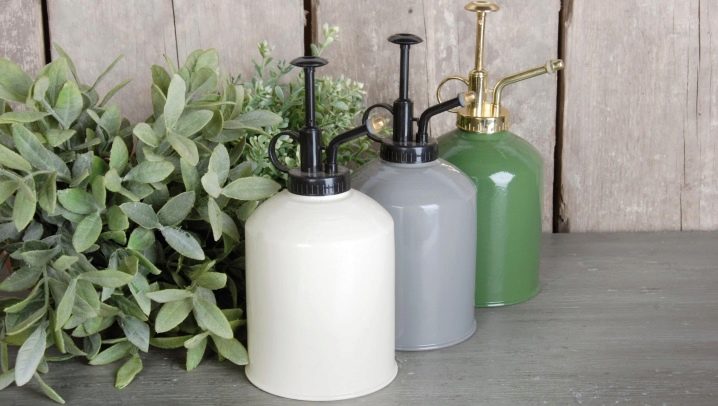
Geranium can be fed once a month with any mineral fertilizers for indoor plants. Potassium phosphate fertilizers can be added during flowering. The plant is light-requiring, and therefore it is better to put it in a well-lit place.
With a lack of natural light, the leaves and flowers of the plant become small and pale. Since the plant forms flowers on all sides, the pot must be periodically turned from side to side. And lastly, if you want to have a lush bush over time, and not a lonely stem, then after transplanting the sprout into the main pot, cut off the crown.
In addition to indoor conditions, geranium grows very well outdoors in warm seasons. With proper watering, temperature and humidity, and lighting, you can grow a lush plant with abundant flowering within a few months.
More information about the propagation of geraniums by cuttings can be found in the following video.







































































































The comment was sent successfully.